Walking in the Footsteps of Frankenstein, 200 Years On
Rod Gilchrist travels to Switzerland
This post may contain affiliate links. Learn more
Published two centuries ago this summer, Rod Gilchrist takes a trip to Switzerland to where Mary Shelley conceived Frankenstein…

Most visitors to Geneva collect their skis at the airport carousel and head straight for the mountains which encircle this scenic lakeside city like an alpine necklace. Either that or they arrive to visit their money. The discreet banks in Geneva, despite international money laundering regulations, remain the favoured hideaway for African despots and Russian oligarchs to squirrel away their loot. But I am heading for a more darkly glamorous destination, the Villa Diodati, where amid meteorological drama, lightning, thunder and lashing gales, Mary Shelley conceived Frankenstein, first published 200 years ago this summer.
48 Hours in Mürren, Switzerland
Anniversary Celebrations
Everyone is very excited about the anniversary. Young Frankenstein the Musical reigns in the West End, Penguin has published a revised edition of the book and even the Bank of England is getting in on the act issuing a new £2 coin with the monster’s head on it.
The Victoria and Albert Museum has staged learned lectures on Frankenstein’s contemporary relevance, the Science Museum offers a computer-generated game where children can bring him to life and television is screening the classic X-rated Hammer films with a demonic Christopher Lee starring as the grotesque giant.
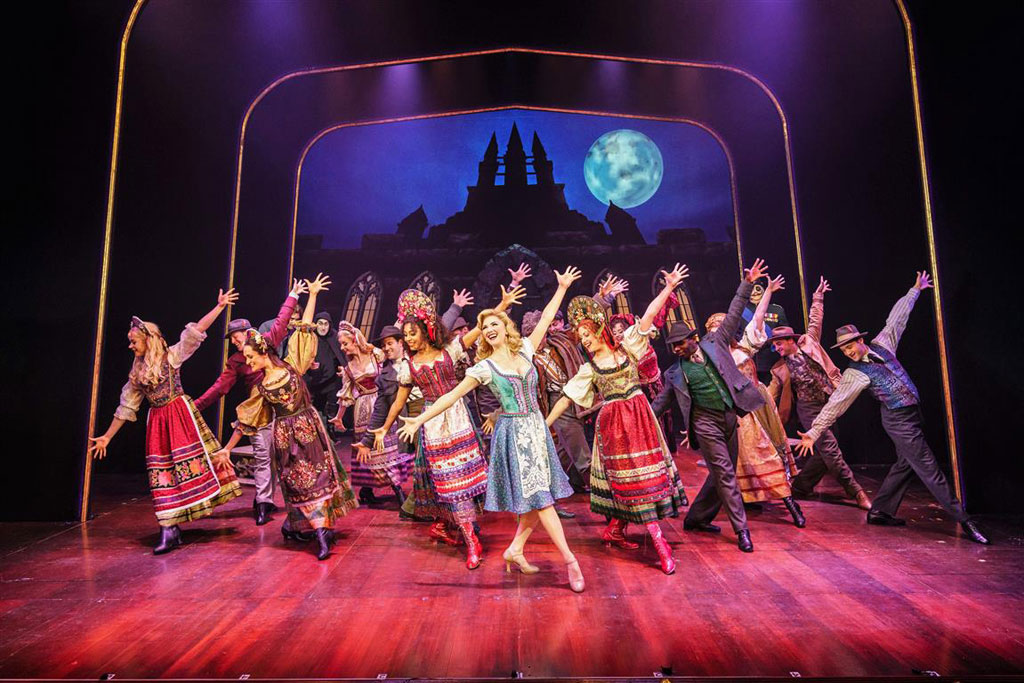
Young Frankenstein the Musical
All summer, the Swiss Tourist Board is inviting tourists to ‘Walk In The Footsteps Of Frankenstein’, a guided trail which stops at the lakeside villa where the creature was conceived, the mountains where he raged against the world, locations of his hideous murders and spooky Medieval castles. Two centuries after Frankenstein disappeared on a raft of ice, presumed doomed, he lives again.
Whatever the celebrations surrounding culture’s most mythologised son, which became flesh when created in a remote German laboratory just after the French Revolution but is still a byword for terror in the 21stcentury, the life of Mary, the monster’s mother, almost upstages her progeny as a Gothic horror story.
What’s On at the Theatre in London
Mary’s Story
She arrived in Geneva as an 18-year-old amid a frisson of scandal. Her lover, Percy Bysshe Shelley, had deserted his wife who was later to drown herself in the Serpentine, after learning Mary had produced a son by her husband. Mary, who was a virgin when they met, became pregnant while making love to Shelley beside her mother’s tomb in St Pancras churchyard.
Another 18-year-old, Mary’s stepsister, Claire Clairmont, went with her having fraternised with Lord Byron resulting in her own pregnancy. The literary Lothario himself turned up a couple of days later, forced to flee London following rejection by polite society after allegations of incest with his half-sister Augusta.
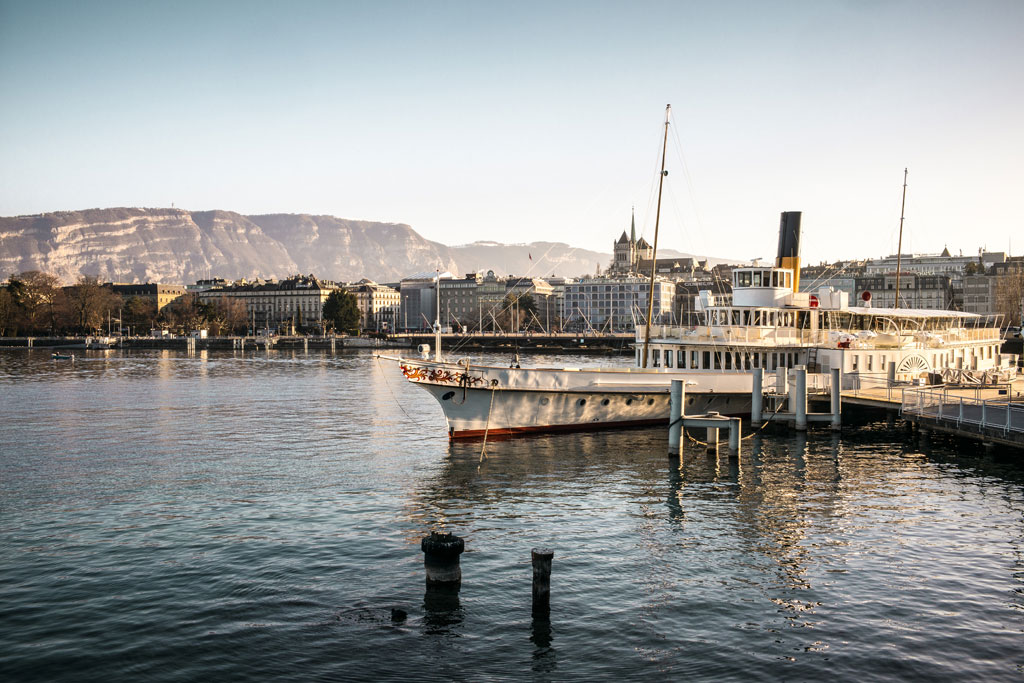
Geneva
He and his physician companion, Dr John Polidori, had been visiting the battlefield at Waterloo, but Polidori was in a hurry to get to Geneva as he wanted to seduce Claire.
Byron took a villa in a vineyard overlooking the lake while the Shelleys put up at a more modest lodge closer to the lake at Montalegre but soon both sets of vagabond exiles were socialising and sparking amid much sexual tension.
The Birthplace of Frankenstein
The Villa Diodati, which Byron rented, still exists. It’s a handsome hacienda with green shutters and a commanding view of the lake in the upscale bankers’ suburb of Cologny. It’s set in a manicured estate with the snowy slopes of the Jura mountains on the horizon and Mont Blanc to the north.
Today Villa Diodati is owned by British businessman Alan Parker who once a year allows students from the nearby Bodmer museum, a treasure trove of Frankenstein ephemera, to be lectured in the candlelit saloon where Mary’s ‘baby’ was given the spark of life after Byron wagered that none of his guests could create a really frightening ghost story.
20 Places to Sleep Before You Die
The weather that day was sinister. An eruption at Mount Tamboro in Indonesia sent clouds of volcanic ash billowing into the upper atmosphere blacking out the sun; rain fell incessantly, temperatures plummeted, birds roosted at noon, candles had to be lit at midday as darkness descended.
These New Romantics, in truth a disparate band of wealthy 19th-century hippies, had imagined their days would be filled enjoying the beauties of the landscape and the lake, of serene cruising and pastoral walks in the foothills of the Alps, but with thunder and lightning rolling down the mountains the foul weather made them prisoners within the walls of Villa Diodati.
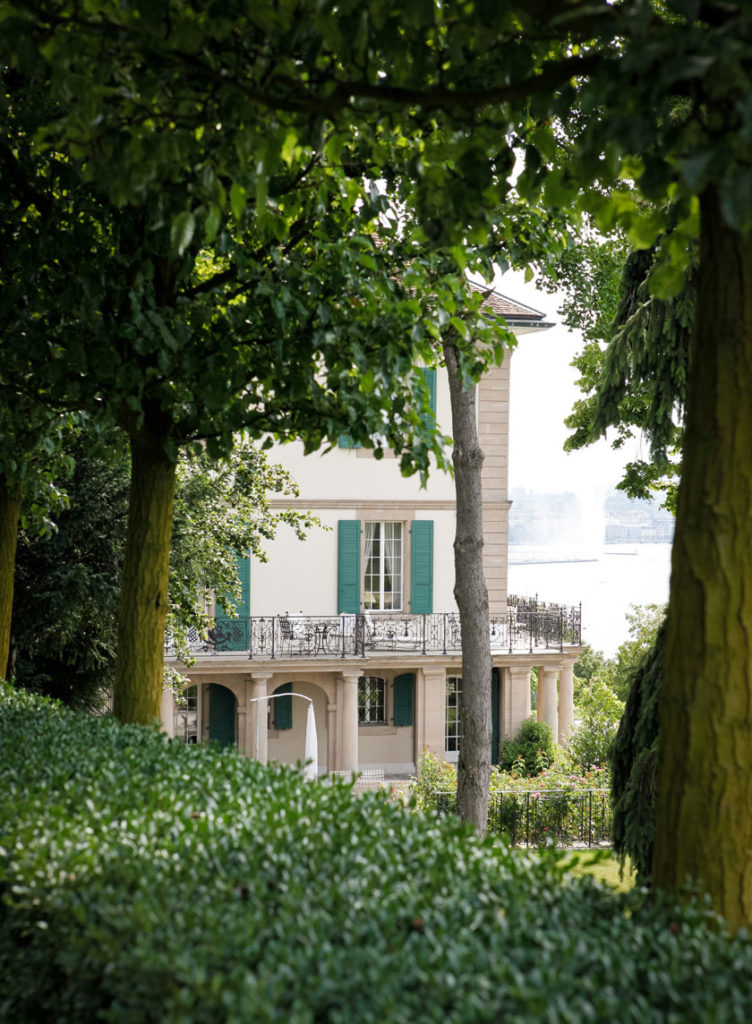
VILLA DIODATI ©Fondation Martin Bodmer, Naomi Wenger
They had been reading Phantasmagoriana, a book of German ghost stories, and an atmosphere of impending doom prevailed as industrial quantities of drink and laudium were consumed amid fevered conversation about sorcery and the ability of science to create man out of matter.
They were particularly fascinated by the experiments with electricity by Luigi Galvani with who, by shooting electricity through dead frogs, could make the toads seemingly hop into life again.
As Shelley and Byron talked long into the night, Mary, who believed both men were geniuses and wanted to impress them, took Byron’s challenge seriously and went to bed determined to create a story that would make even her heroes shake with fear.
The Best Hotels and Chalets for Skiing 2018/19
It’s significant that Mary was still haunted by the loss of a baby after she had become pregnant with her first child. She had also endured vivid dreams about the legend of Castle Frankenstein which she had seen while cruising on the Rhine. It was here, a young man called Konrad Dippel was charged with robbing graveyards for corpses he believed could be re-animated by injecting them with a mixture of blood and bone.
The Dream
These disturbing, macabre emotions fused in a nightmare in which Mary literally dreamed how a Dr Victor Frankenstein, studying transmogrification at a remote Bavarian University, was overwhelmed by a messianic crusade to discover ‘the cause of generation and life’; the story was almost fully formed when she woke.
In her imagination, Frankenstein carries out mysterious experiments and constructs a titanic hulking body setting into motion a chain of events in which everything the doctor loves is destroyed by his misshapen creation. ‘I saw the hideous phantasm of a man stretched out and then on working of some powerful engine show signs of life,’ Mary later explained.
Geneva’s charming, Captain Pugwash-style paddle steamers pass the Villa Diodati on their cruises along the lake to Chateau Chillon, a storybook castle on the shores of Montreux where Byron was inspired to write his most celebrated poem after learning the Duke of Savoy was chained and tortured in the dungeon for opposition to the local king.
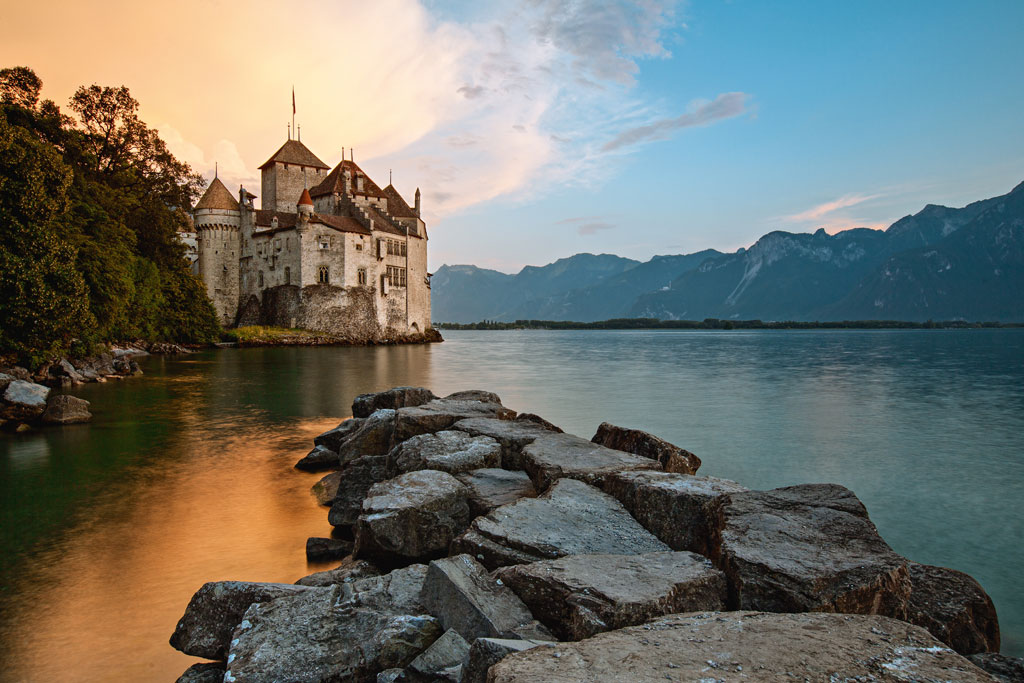
The shores of Montreux
Though unrelated to the monster, Chillon is on the Frankenstein trail because of Byron, which while welcomed by Geneva’s hospitality industry, leaves most of its citizens curiously apathetic. They are just not into their most famous historical figure, unimpressed by a grizzly black iron statue of the walking dead man that was only erected four years ago in an unloved square.
Indeed, Geneva is hardly Central Casting’s idea for the birthplace of the Ungodly Frankenstein. The cathedral here was once the pulpit of Jean Calvin, fearsome priest of the Reformation, and the city today prefers to be known for its financial services, gem-encrusted Rolex watches and rich chocolate. Unlike Salzburg where Mozart’s face appears on everything from T-shirts to tablecloths, there is no Frankenstein tat in Geneva’s kiosks, just an arsenal of Swiss army pen knives.
6 of the Best London Staycations
‘Frankenstein is our dirty secret,’ is how actor Oliver Lafranc, one of our guides told me. Another, David Spur, a professor at Geneva University, put it another way: ‘Byron we like. We see him as a kind of 19th-century Mick Jagger, leading an outrageous life, seducing beautiful women, taking drugs, producing hits, charismatic and heading for an heroic death.’
Peering over the wall at Villa Diodati, well-shielded from public gaze by purple flowered rhododendrons, the view takes in the far side of the lake where the citadel-like headquarters of the United Nations in Europe dominates the shore line. Ignore that and the panorama is much the same as the two houses would have looked on.
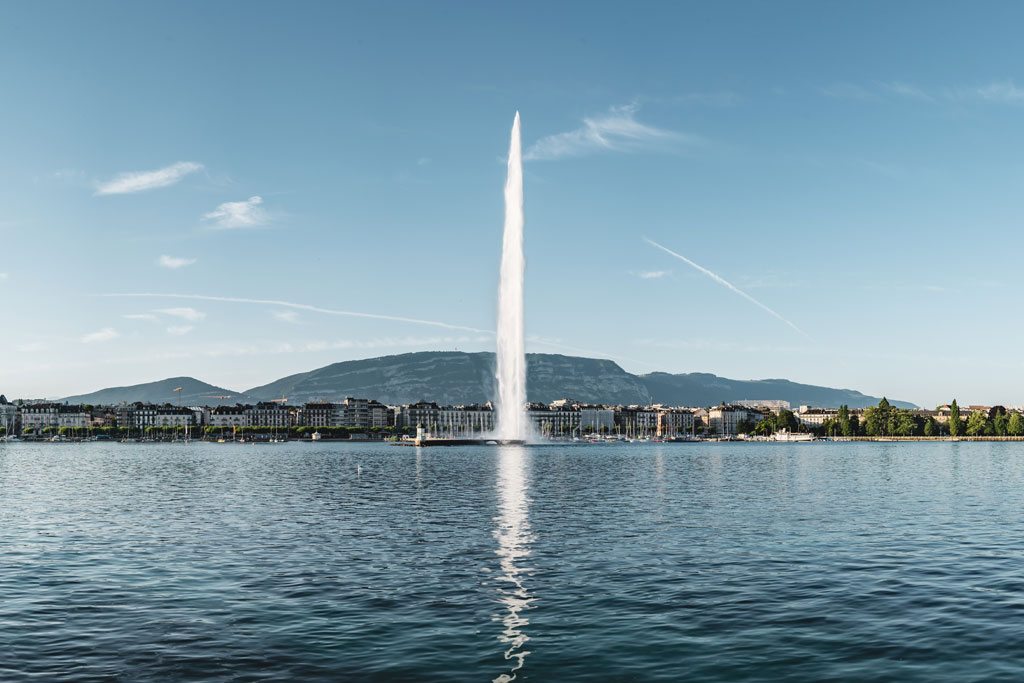
Jet d’Eau
Tiny puffs of white sails on the little yachts glide past the smart beach lidos where it is possible to see Geneva’s most eye-catching feature, the Jet d’Eau which spouts water 150m into the air.
The Theories
Students of Frankenstein have intriguing theories about the hidden meaning of Shelley’s novel that may have value or may just be inflating their own status. The scholarly David Spur suggests some think the subtext suggests a parable for the dangers of man playing God, investing it with contemporary relevance given scientific advances in the creation of new body parts to replace those diseased.
Feminists take the novel to their heart as a signal of the dangers inherent when women are not used to create life and men marginalise or, indeed, exclude them. In her novel everything goes wrong when Frankenstein refuses to create a wife for him and it’s worth noting Mary was so uncertain of her own worth that she originally published Frankenstein anonymously.
Theologians conjure hellfire if we abandon religion for the aetheism inflected throughout the plot. Those less convinced say all of this is just mumbo-jumbo and Mary just wanted to write a racy read.
The Most Famous Monster of All
Her genius, remarkable in one so young, and the reason Frankenstein has endured to become the most famous monster of all, despite being played by such disparate actors as Boris Karloff (tragically) to Gene Wilder (comically), is the brilliant way she commands the reader’s sympathy for the creature even after its vicious murders.
‘Hear my tale,’ the Grotesque insists when he confronts his creator. ‘I was a poor helpless miserable wretch; I knew and could distinguish nothing but feeling pain invade me on all sides. I sat down and wept… how dare you sport with life.’ Finally, in a heartrending plea on realising he is ugly and an outcast, he begs Frankenstein: ‘Make me happy’.
Despite her fame and success, tragedy and guilt overshadowed much of Mary’s life. She suffered several miscarriages, only one of her four children survived, and her own mother died from an infection after a doctor had reached into her uterus to remove the afterbirth shortly after she was born.
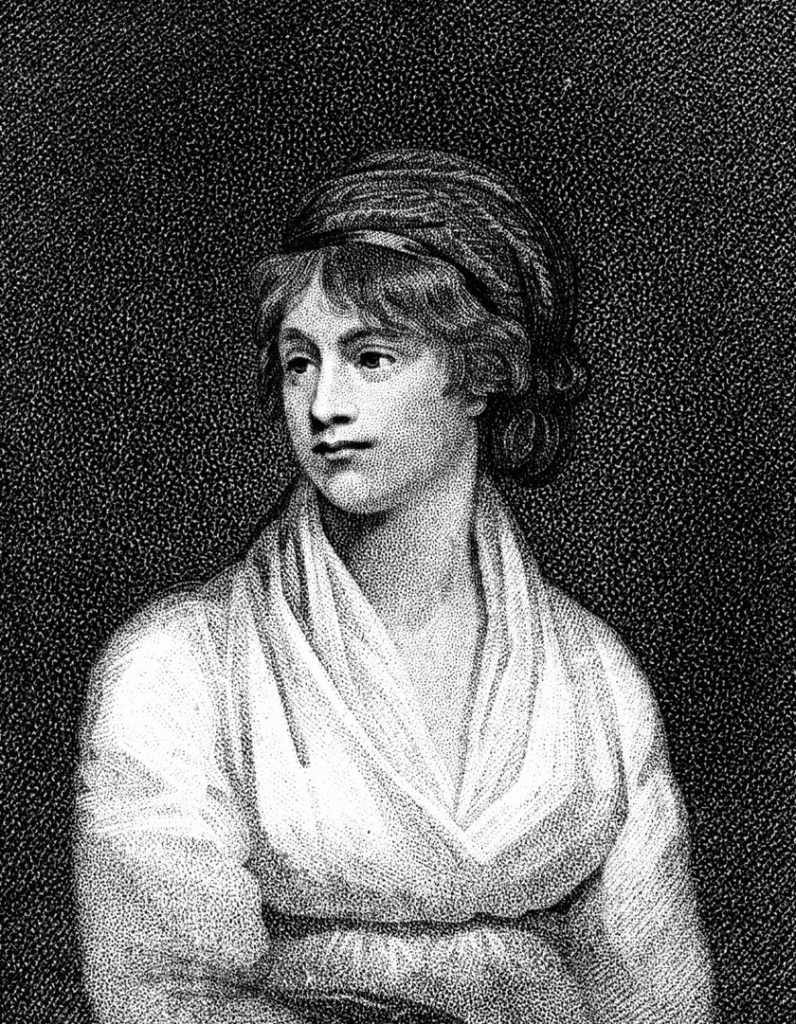
Mary Shelley
Other circumstances undoubtedly fed into her vivid imagination. Her hated stepmother and father moved the family to dingy lodgings near Smithfield market where Mary was kept awake at night by the screams of slaughtered animals. The bell at nearby St Sepulchre’s tolled every time a condemned man passed by on his journey to Tyburn and Mary knew that their corpses were destined for dissection.
An oil painting in the National Portrait Gallery shows Mary as a beautiful 18-year-old but her seductive looks were later ravaged by smallpox, her once delightful face bearing further scars of grief when Shelley was drowned in a boating tragedy in Italy.
Mary is buried in Bournemouth alongside her mother and father who had to be dug up when the trains came to St Pancras. Her tombstone remembers her only as: ‘Daughter of William and Mary Wollstonecraft Godwin and widow of the late Percy Bysshe Shelley.’ A monstrous omission.
For more information contact [email protected] or call 00800 100 200 30. Swiss operates 180 weekly flights from Heathrow, London City, Manchester, Birmingham, Edinburgh and Dublin, from £55 one way. The Swiss travel pass offers unlimited travel on trains and buses, and includes all museums, for £197.
